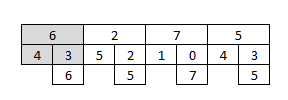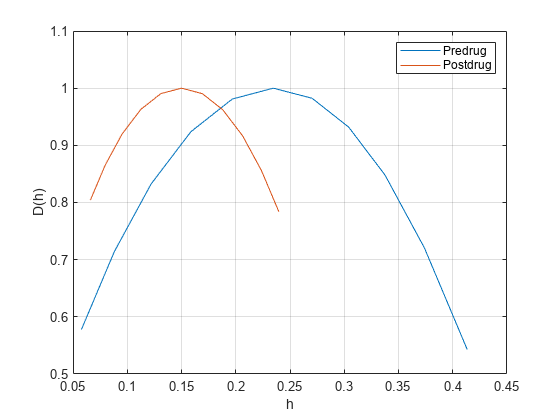dwtleader
Multifractal 1-D wavelet leader estimates
Syntax
Description
[___] = dwtleader(___, returns
the wavelet leaders and other specified outputs with additional options
specified by one or more Name,Value)Name,Value pair arguments.
Examples
Input Arguments
Name-Value Arguments
Output Arguments
Algorithms
Wavelet leaders are derived from the critically sampled discrete wavelet transform (DWT) coefficients. Wavelet leaders offer significant theoretical advantages over wavelet coefficients in the multifractal formalism. Wavelet leaders are time- or space-localized suprema of the absolute value of the discrete wavelet coefficients. The time localization of the suprema requires that the wavelet coefficients are obtained using a compactly supported wavelet. The Hölder exponents, which quantify the local regularity, are determined from these suprema. The singularity spectrum indicates the size of the set of Hölder exponents in the data.
1-D wavelet leaders are defined as
where the scales are 2j, translated to time positions 2jk. The time neighborhood is , where . The time neighborhood is taken over the scale and all finer scales. dx(j,k) are the wavelet coefficients.

To calculate the wavelet leaders, Lx(j,k):
Compute the wavelet coefficients, dx(j,k), using the discrete wavelet transform and save the absolute value of each coefficient for each scale. Each finer scale has twice the number of coefficients than the next coarser scale. Each dyadic interval at scale 2j can be written as a union of two intervals at a finer scale.
Start at the scale that is one level coarser than the finest obtained scale.
Compare the first value to all its finer dyadic intervals and obtain the maximum value.
Go to the next value and compare its value to all of its finer scale values.
Continue comparing the values with their nested values and obtaining the maxima.
From the maximum values obtained for that scale, examine the first three values and obtain the maximum of those neighbors. That maximum value is a leader for that scale.
Continue comparing the maximum values to obtain the other leaders for that scale.
Move to the next coarser scale and repeat the process.
For example, assume that you have these absolute values of the coefficients at these scales:

Starting with the top row, which is the next coarsest level from the finest scale (bottom row), compare each value to its dyadic intervals and obtain the maxima.

Then, look at the three neighboring values and obtain the maximum. Repeat for the next three neighbors. These maxima, 7 and 7, are the wavelet leaders for this level.

References
[1] Wendt, Herwig, and Patrice Abry. “Multifractality Tests Using Bootstrapped Wavelet Leaders.” IEEE Transactions on Signal Processing 55, no. 10 (October 2007): 4811–20. https://doi.org/10.1109/TSP.2007.896269.
[2] Jaffard, Stéphane, Bruno Lashermes, and Patrice Abry. “Wavelet Leaders in Multifractal Analysis.” In Wavelet Analysis and Applications, edited by Tao Qian, Mang I Vai, and Yuesheng Xu, 201–46. Basel: Birkhäuser Basel, 2007. https://doi.org/10.1007/978-3-7643-7778-6_17.


